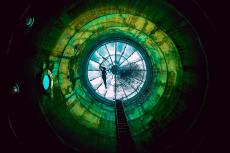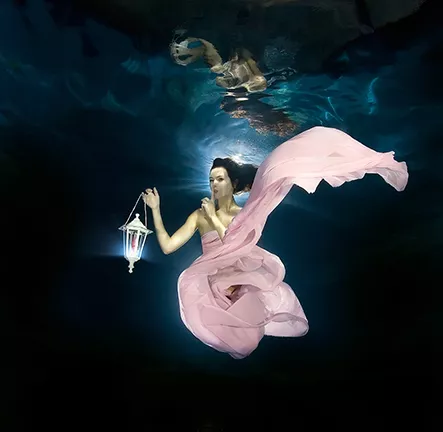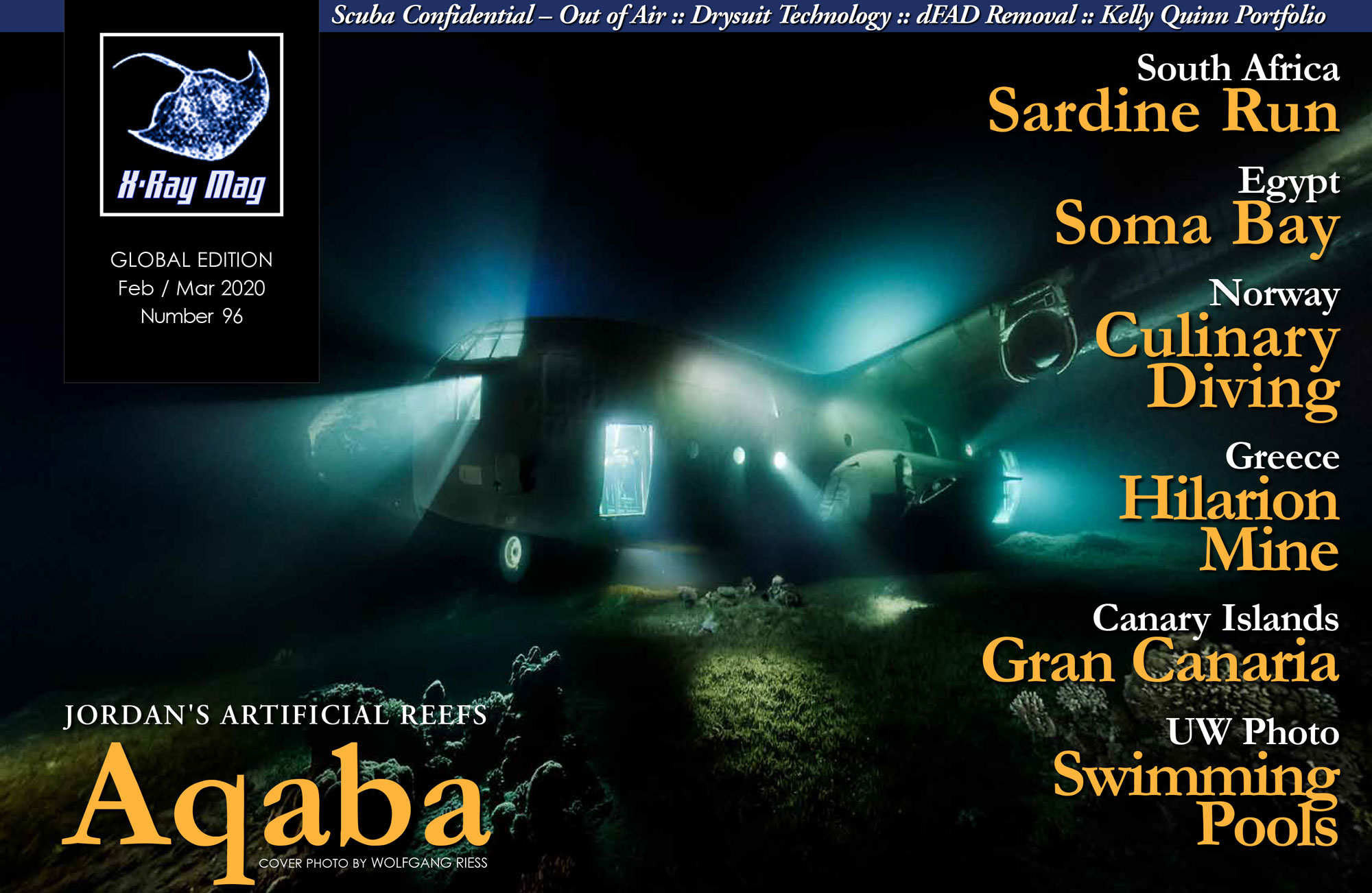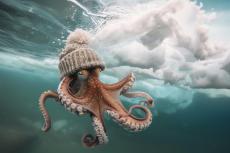It used to be that when one talked about underwater photography, one primarily meant photographing sea animals in their natural surroundings; however, it can also be interesting to shoot underwater images in swimming pools. Firstly, a pool can be turned into an underwater photo studio. Secondly, there are pools that are unique in themselves. I present some examples in this article.
Contributed by
Factfile
Anatoly Beloshchin is a widely published Russian underwater photographer and IANTD trimix instructor-trainer based in Moscow.
For more information, please visit: anatoly.pro.
When doing underwater photography in pools, I have always been irritated by the inherent “feeling of a pool” in the resultant images. What does one shoot in a pool? People! However, if it is not to chronicle dive training or swimming competitions, why do we have to include the pool’s tiles in the shot?
So, I decided to create a photo studio out of a pool. I bought a big piece of black material, made it a “backdrop” for a photo and installed an underwater light. As a result, I got a photo of a model that seemed to be hanging in weightlessness.
I think that the main problem with such a photo is the lack of a feeling of the water. There are two ways to solve this: Firstly, include in the shot the illuminated surface of the water, catching the reflection of the model; and secondly, blow bubbles into the water. Catching the model’s reflection is quite easy by tipping the camera angle upward. So then, you just need to tinker with the bubbles.
To create bubbles, one option is to connect a hose lined with holes to an air-filled balloon, or, if depth permits, put a diver nearby, exhaling bubbles from scuba equipment. If there is a possibility to turn off or dim the light in the pool, then the resulting image can be very interesting!
Such an underwater studio can be made quickly from almost any pool. However, there are pools that are unique in themselves. I had a chance to shoot in three such pools.
GCTC
The pool at the Yuri Gagarin Research and Test Cosmonaut Training Center (GCTC) is located near Moscow in the Zvyozdny gorodok, or urban settlement, of Star City in Russia. It is a cylindrical pool with a diameter of 23m and a depth of 12m. Replica segments of the International Space Station (ISS) and the Soyuz spacecraft are immersed in the pool for use in training astronauts in weightless conditions.
Here, one may ask the pool staff to turn off the lights. By the way, the lights turn off quite spectacularly; they do not go out instantly but slowly dim, imitating a sunset. Being without light in the water at the space station in the pool feels like being in outer space—with only one difference: You can go home by car the same day. Plus, the temperature of the surrounding water is a comfortable 30°C (86°F).
MChS
Another even more unique pool—which, more precisely,comprises two pools—is also located near Moscow in the Academy of Civil Defense of the Russian Ministry of Civil Defence, Emergencies and Disaster Relief (MChS). One pool measures 25m by 17.5m, with a depth of 2m to 5m. The other is cylindrical, with a diameter of 5m and a depth of 12m.
What is unusual about this facility is that both pools hold water from a well located 190m underground, and the pools are made of stainless steel. In addition, a glass dome covers the deep cylindrical pool.
This pool facility attracts not only divers and freedivers but also underwater photographers. The metal walls of the pools create very unusual reflections of light streaming down from the surface, which can result in very interesting photos. Additionally, the cylindrical pool with the glass dome can widen the scope of a photographer’s imagination.
Y-40 “The Deep Joy”
One more unusual pool is located in Italy in the small city of Montegrotto Terme, which is 12km from Padua. This pool, called Y-40 “The Deep Joy,” is the deepest pool in the world. It is even listed in the Guinness Book of World Records, as its depth is 42m!
Before traveling to this location, I was slightly skeptical about the idea of shooting underwater images in Y-40. Above all, I was interested in an interesting photo session, and it was not clear to me what else there was, besides the pool’s 42m depth, that was worth the visit.
But when I got there, I discovered more features. Briefly:
- • Y-40 has an unusual shape. It is not a rectangular basin like a typical pool, but rather, it has a layered form. At the shallow end, the depth is only 1.5m. Then, there are several “terraces” at a depth of 5m, one of which gives you a feeling of being in a theatrical scene, underwater. The pool then descends deeper to 10m and 15m. The deepest part is in the “pipe,” which has a depth of 15 to 42m.
- • On one of the pool’s terraces, there is a big mirror, which offers a lot of options for shooting images.
- • There are stylized caves or grottoes of various kinds.
- • There is a glass tunnel, which crosses through the pool, and large windows.
- • The pool’s surfaces are finished with large plates. Moreover, some parts of the pool have different colors. There is no feeling of “tiles” in Y-40, the surface texture that bothers me the most in typical pools.
In addition, the pool is filled with very clear mineral water at a toasty temperature of 34°C (93°F)!
The above three locations are probably the most interesting pools where I have had a chance to shoot in. But there is yet another pool I know of that is unique in concept, located in Houston, Texas, USA, on the 40th floor of the Market Square Tower. Part of this pool is suspended outside the building, hanging out over the city, at a height of 152m (500ft)! Furthermore, the suspended part of this “sky pool” has a transparent bottom and walls. Unfortunately, I have not yet visited this pool, as it is built in a private apartment complex. But I hope to go there one day and share my photographs from this unique place. ■

























































